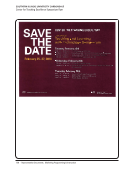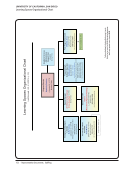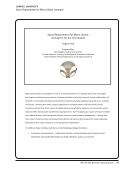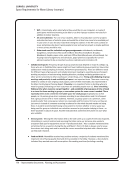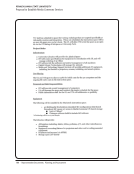SPEC Kit 342: Next-Gen Learning Spaces · 35
Comments N=19
Additional shelving added and collections will be redistributed in the building.
Collection changes have both had a result on the development of learning spaces and resulted from the development of
learning spaces.
Creating collaborative learning spaces has been so important to our School of Medicine that they have made space
available for temporary off-site storage until long-term decisions can be made about retention and storage.
Digital Media Lab: To free space for the VizLounge (high-density data wall), we moved the laser disc collection to off-
site storage, moved the DVD collection to a different floor, and we will move reservable equipment checkout to the
Media Center desk (this equipment supports academic courses). Music: Book collections sent to storage from the Music
Library to make space for a media:scape table for group presentations. Fine Arts: rare materials sent to the Special
Collections library and the space repurposed to create a Materials Collection and makerspace.
Expansion/growth of new genres/areas re: collecting/curating/creating discovery mechanisms for data.
Gaming Lab pilot project will require collecting in new genres/areas.
In order to create space for expanding our collaborative and individual study areas we have moved portions of our
collection to off-site storage. It should be noted that in our assessment with students, they do not want us to remove all
of the books they still like the feel of being surrounded by books and they note that it has the psychological effect of
helping them focus on their work.
In the development of the learning spaces, we have been able to leverage the expertise of one of our librarians and
have developed a very strong retrospective and contemporary game-based learning collection. We are also in a
unique position to bring our primary resource collections together, including archival material, rare books, and art. Our
past decision to prefer electronic over print collections supported our decision to move print collections to an off-site
storage facility.
One example: We moved microforms to both internal and long-term retrieval storage to free up space for student
learning space.
Opened an off-site storage facility in order to reduce print collection and accommodate more space for users (quiet
study, commons areas, soft seating).
Our learning commons was built as an addition to our main library, and is accessible from each level of the main library.
While we can’t fully replicate the openness of the Learning Commons in our old building, we did decide to weed and
relocate the general reference collection from an adjoining space in the old building so that when you looked across the
space, there was a greater feeling of openness and more room for open group study tables.
Some collection weeding and potential move to off-site storage needed to happen at a faster time frame for remodeling
needs than the libraries were able to find a proper location for the removed collection. The engineering library, in order
to make room for one of the two WisCEL Centers, ended up boxing up thousands of volumes with no clear “home.”
They will eventually be either withdrawn or sent to an off-site storage facility, but policies were not fully in place and
the storage facility is just now about to open. There are overall many discussions for future planning about the balance
between collection space (expecting to have a smaller footprint) and learning space.
The cause-and-effect goes both ways. That is, the desire to repurpose space for users influences our decisions to move
collections into high-density storage or replace them with electronic versions and the availability of high-density storage
and increasing amounts of digital content enable us to conceive of our spaces in new ways.
Comments N=19
Additional shelving added and collections will be redistributed in the building.
Collection changes have both had a result on the development of learning spaces and resulted from the development of
learning spaces.
Creating collaborative learning spaces has been so important to our School of Medicine that they have made space
available for temporary off-site storage until long-term decisions can be made about retention and storage.
Digital Media Lab: To free space for the VizLounge (high-density data wall), we moved the laser disc collection to off-
site storage, moved the DVD collection to a different floor, and we will move reservable equipment checkout to the
Media Center desk (this equipment supports academic courses). Music: Book collections sent to storage from the Music
Library to make space for a media:scape table for group presentations. Fine Arts: rare materials sent to the Special
Collections library and the space repurposed to create a Materials Collection and makerspace.
Expansion/growth of new genres/areas re: collecting/curating/creating discovery mechanisms for data.
Gaming Lab pilot project will require collecting in new genres/areas.
In order to create space for expanding our collaborative and individual study areas we have moved portions of our
collection to off-site storage. It should be noted that in our assessment with students, they do not want us to remove all
of the books they still like the feel of being surrounded by books and they note that it has the psychological effect of
helping them focus on their work.
In the development of the learning spaces, we have been able to leverage the expertise of one of our librarians and
have developed a very strong retrospective and contemporary game-based learning collection. We are also in a
unique position to bring our primary resource collections together, including archival material, rare books, and art. Our
past decision to prefer electronic over print collections supported our decision to move print collections to an off-site
storage facility.
One example: We moved microforms to both internal and long-term retrieval storage to free up space for student
learning space.
Opened an off-site storage facility in order to reduce print collection and accommodate more space for users (quiet
study, commons areas, soft seating).
Our learning commons was built as an addition to our main library, and is accessible from each level of the main library.
While we can’t fully replicate the openness of the Learning Commons in our old building, we did decide to weed and
relocate the general reference collection from an adjoining space in the old building so that when you looked across the
space, there was a greater feeling of openness and more room for open group study tables.
Some collection weeding and potential move to off-site storage needed to happen at a faster time frame for remodeling
needs than the libraries were able to find a proper location for the removed collection. The engineering library, in order
to make room for one of the two WisCEL Centers, ended up boxing up thousands of volumes with no clear “home.”
They will eventually be either withdrawn or sent to an off-site storage facility, but policies were not fully in place and
the storage facility is just now about to open. There are overall many discussions for future planning about the balance
between collection space (expecting to have a smaller footprint) and learning space.
The cause-and-effect goes both ways. That is, the desire to repurpose space for users influences our decisions to move
collections into high-density storage or replace them with electronic versions and the availability of high-density storage
and increasing amounts of digital content enable us to conceive of our spaces in new ways.










































































































































